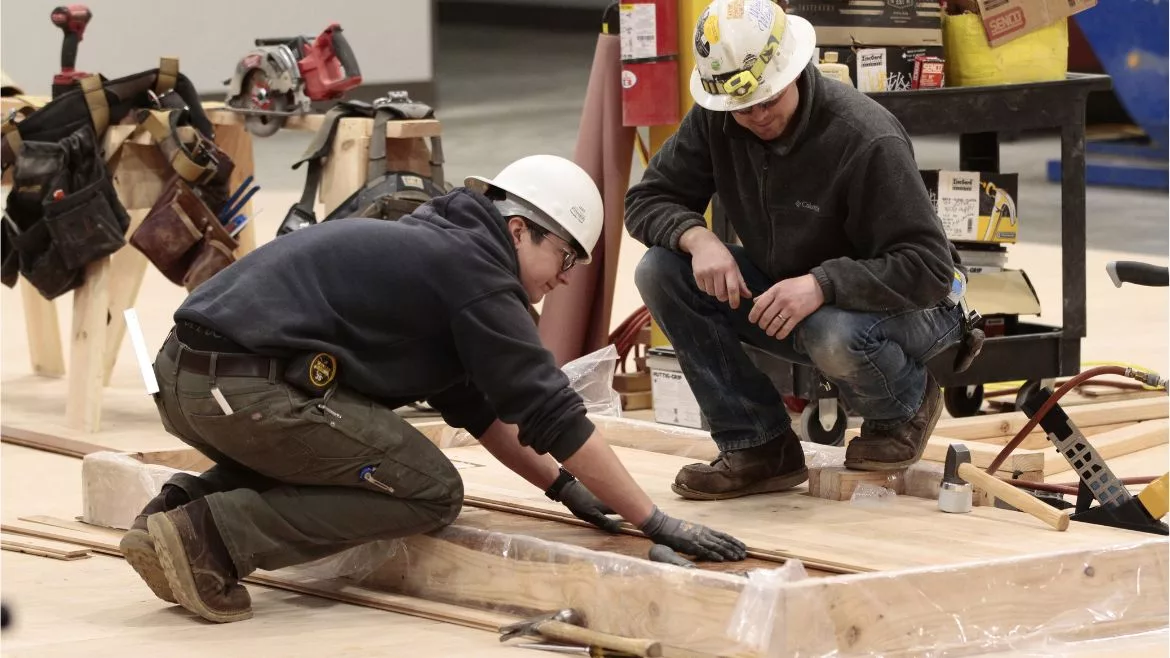Engaging the Next Generation of Installers Will Require Moving Beyond an A La Carte Approach

Photo: INSTALL
While the floor covering industry has been largely focused on the immediate challenges of recruiting and retaining skilled labor, attending to the long view of the industry’s future and what we’ll do to attract the next generation of installers remains just as pressing.
How will the industry engage this new generation? What will attract them to the trade? How will we balance their needs with maintaining the professional standards our industry has worked to establish? These questions are still largely unanswered, at least in practice.
Part of our struggle has been the immediacy of adapting to rapid changes in attitudes about things like job training, compensation, and work/life balance. Naturally, concerns about how to respond to these changes and fill roles for today’s installation projects take precedence over planning for the future of the industry. But the two aren’t necessarily at odds.
How each organization eventually answers the bigger questions will surely differ from one to the next, but the framework for the future is already taking shape — and it isn’t too far off from what we’ve already gotten comfortable with.
From A La Carte to Multi-Course Meal
Organizing the floor covering trade around the next generation of installers is going to take time and effort, but the good news is that organizations already have the knowledge and resources they need to get started. Often, all that’s required to become future-ready is recognizing that the standalone initiatives you’ve already adopted are parts of a greater whole. To illustrate this point, consider each of these recruitment and retention strategies that many in the industry are employing to deal with current installer shortages.
- Offering skills training. To attract candidates without formal education, employers offer to teach new hires the fundamentals of the trade like the mathematics and blueprint reading that are essential to proper installation. This strategy provides an opportunity for people new to the trade to explore it with confidence, and it delivers a basic level of workmanship quality assurance for the employer.
- Creating a path to certification and licensing. Certification and license credentials offer the dual benefits of further refining an installer’s installation skills and keeping the installer engaged in their work over the length of their career. It also provides the contractor or employer with a more versatile labor pool that can take on a greater variety and complexity of installation projects.
- Providing critical-thinking and problem-solving opportunities. Allowing installers to think critically and independently about their work and solve complex problems on their own demonstrates trust and establishes goodwill. Installers who are challenged in this way are more likely to remain engaged in their work and loyal to their organization.
- Building an authentic workplace culture. Authenticity attracts like-minded individuals who are more apt to fit with your company’s work style and personality. So, the qualities that you present when recruiting new installers need to match up after they’re hired to begin to earn their trust. If you promise competent mentors, collaborative leaders, and opportunities for professional development, you need to deliver if you want your new hire to stick around longer than a few months.
- Communicating effectively. Effective communication goes far beyond speaking and being understood. It’s a set of skills everyone can call upon in a variety of situations to improve outcomes. Good communication skills are accompanied by many benefits, including more engaged employees, stronger relationships with contractors and suppliers, higher quality work, and happier customers.
- Training the trainers. Few people are natural leaders. Most need training. When you have an exceptionally skilled installer, it makes sense to have them teach what they know to those less experienced. It also makes sense to equip them with the teaching and mentoring skills they need to be successful trainers. This is good practice for capturing and passing on the knowledge of installers nearing retirement, and it creates a career goal for novice installers.
- Recognizing and rewarding a job well done. In our fast-paced industry, it’s easy to overlook acknowledgment of a job well done, but making time to do so pays you back tenfold. Learning how to offer praise, even in the smallest ways, makes people feel valued, and it creates the kind of positive morale you can build a strong team around.
More than likely, you have employed at least one of these strategies to help recruit new installers and better engage the ones you have. Already proven effective in the initial aspects of hiring, training, and retention, imagine how they might work together as a long-term plan for an installer’s entire career.
A defined training sequence, a commitment to recognition, an authentic workplace culture, and effective communication will need to be assembled into a commonly accepted, industry-wide framework. From there, we’ll be able to bolster our reputation as an industry with rewarding opportunities that are geared toward new work-life sensibilities, and we’ll take the next steps across the floor to the future.
Looking for a reprint of this article?
From high-res PDFs to custom plaques, order your copy today!




